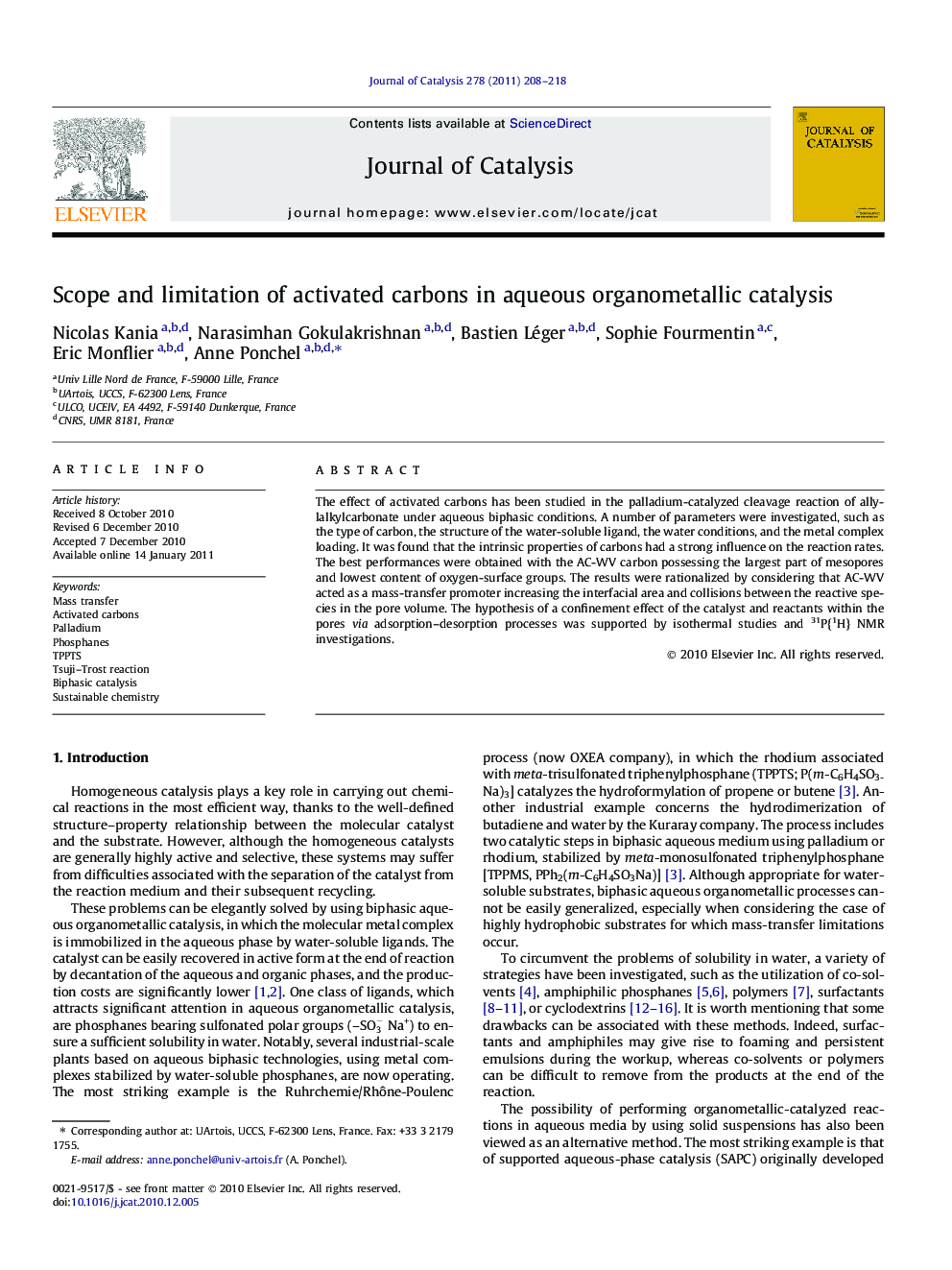| Article ID | Journal | Published Year | Pages | File Type |
|---|---|---|---|---|
| 61754 | Journal of Catalysis | 2011 | 11 Pages |
The effect of activated carbons has been studied in the palladium-catalyzed cleavage reaction of allylalkylcarbonate under aqueous biphasic conditions. A number of parameters were investigated, such as the type of carbon, the structure of the water-soluble ligand, the water conditions, and the metal complex loading. It was found that the intrinsic properties of carbons had a strong influence on the reaction rates. The best performances were obtained with the AC-WV carbon possessing the largest part of mesopores and lowest content of oxygen-surface groups. The results were rationalized by considering that AC-WV acted as a mass-transfer promoter increasing the interfacial area and collisions between the reactive species in the pore volume. The hypothesis of a confinement effect of the catalyst and reactants within the pores via adsorption–desorption processes was supported by isothermal studies and 31P{1H} NMR investigations.
Graphical abstractAddition of activated carbon, with appropriate physicochemical characteristics, appears as a simple and efficient method to solve mass-transfer limitations in aqueous organometallic catalysis. New insights into the role of carbon support during the catalytic course are reported.Figure optionsDownload full-size imageDownload high-quality image (75 K)Download as PowerPoint slideResearch highlights► Use of activated carbons for the Pd-catalyzed Tsuji–Trost reaction in biphasic aqueous conditions. ► Activities connected to the textural and surface chemistry properties of activated carbons. ► Reaction rate enhancement up to a factor of 470 with the most hydrophobic substrate. ► Confinement of the reactive species in the pores via simultaneous adsorption–desorption processes.
